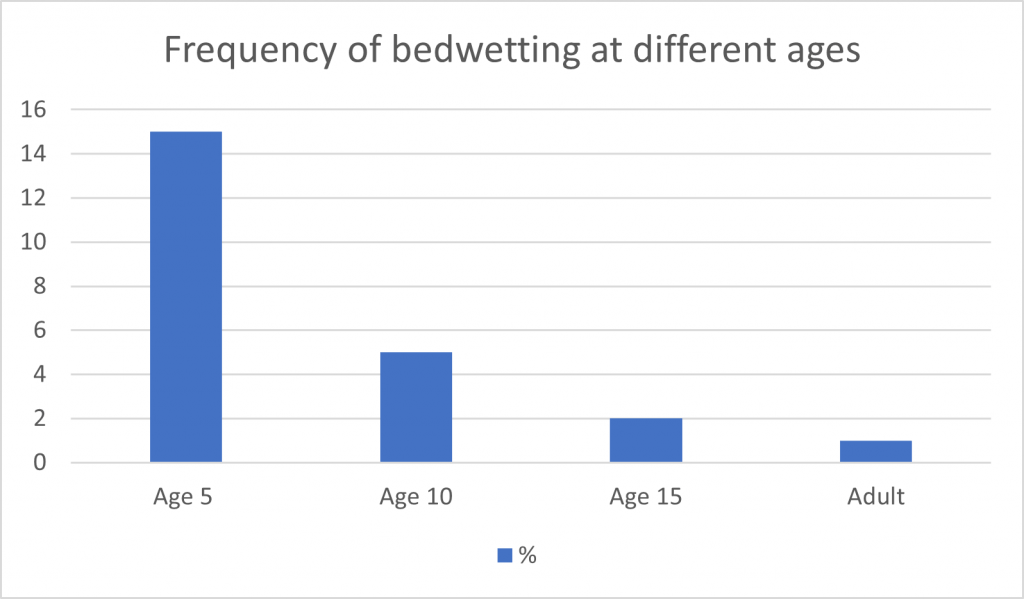Bedwetting in children 101: frequency, causes and management
Bedwetting (also known as enuresis) is a very common issue in young children, especially when they are still in the potty training stage. The average age to stop wetting the bed is five years old1. As children grow older, parents may begin to worry if they haven’t grown out of it. In this article, we want to go over the causes of this issue in children and young people, how common it is at different ages and some suggestions for managing it.
What causes bedwetting in children and teens?
Bedwetting is common and often runs in families (so if you used to wet the bed, your child might too). Both children and parents can find it upsetting, but children and young people often grow out of it. Many things can cause night-time accidents in teens and children, including:
- Not feeling the need to wee while asleep
- Making too much wee at night
- Stress
- Underlying health conditions (such as diabetes or constipation)1
How common is bedwetting at different ages?
Most parents know that wetting the bed is common when your little one is still toilet training. However, as your child grows older, you may find it concerning if they still have accidents at night. It might be reassuring to know that bedwetting is still relatively common at age five and older, with half a million children and teenagers in the UK experiencing night-time accidents2.

Statistics taken from: https://www.brollysheets.co.uk/blogs/night-training/bed-wetting-statistics-how-common-is-it
As you can see from the graph above, while bedwetting gets less common as children grow older, it can still happen in older children and teens. At age 5, about 15% of children experience this issue; this decreases to 5% at age 10, 2% at age 15 and 1% in adults. While bedwetting is usually nothing to worry about, iD would recommend speaking to a health professional for more advice.
How can I manage bedwetting in my child?
No matter what age your child is when they experience bedwetting, there are always ways of managing it. While there are medications to treat it, such as Desmopressin Acetate (DDAVP), imipramine and anticholinergics3, there are also several behavioural techniques you can try too. (iD would recommend speaking to a health professional about the best treatment for your child). These techniques include:
- limiting fluids before bedtime
- going to the toilet before bed
- an alarm to wake your child when they begin to wet the bed
- counselling.4
You can also manage bedwetting by using specially designed continence products. iD has a full range of solutions for children age 4 to 15. The iD Comfy Junior Range features pants and slips that are comfortable, discreet and secure, meaning there is a suitable product for everyone.

1 “What age is normal for night time dryness?”, ERIC, n.d., Source: https://www.eric.org.uk/Blog/what-age-is-normal-for-night-time-dryness#:~:text=Bedwetting%20is%20considered%20to%20be,take%20longer%20than%20the%20daytime.
2 “Bedwetting in children”, NHS, 27 April 2020, Source: https://www.nhs.uk/conditions/bedwetting/
3 “Bedwetting”, ERIC, n.d., Source: https://www.eric.org.uk/pages/category/bedwetting
4 “Medications to Treat Bed-wetting”, National Kidney Foundation, n.d., Source: https://www.kidney.org/patients/bw/BWmeds
5 “Bedwetting”, Cleveland Clinic, 10 October 2019, Source: https://my.clevelandclinic.org/health/diseases/15075-bedwetting#:~:text=Behavioral%20techniques%20are%20changes%20you,of%20fluids%20during%20the%20day.
